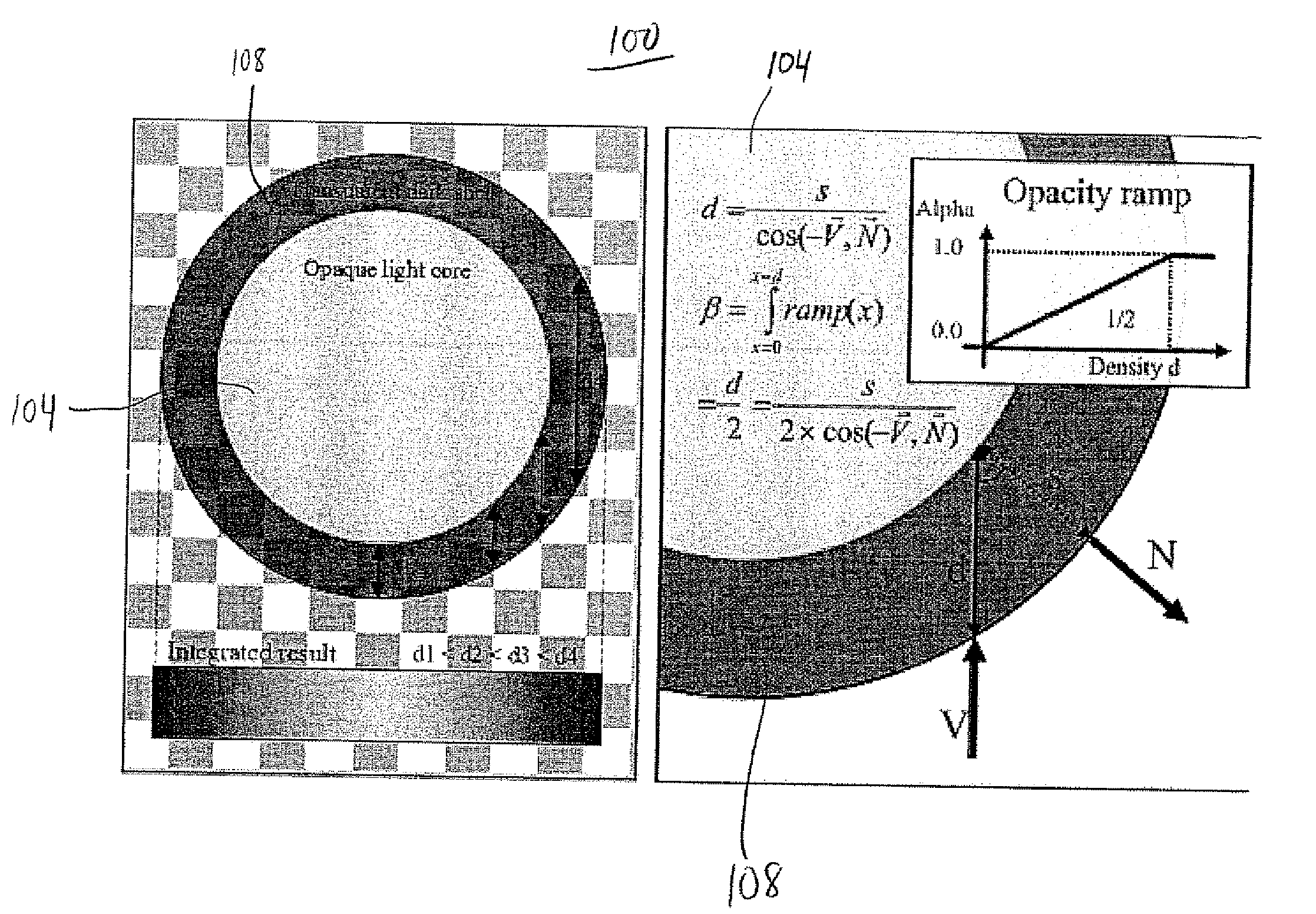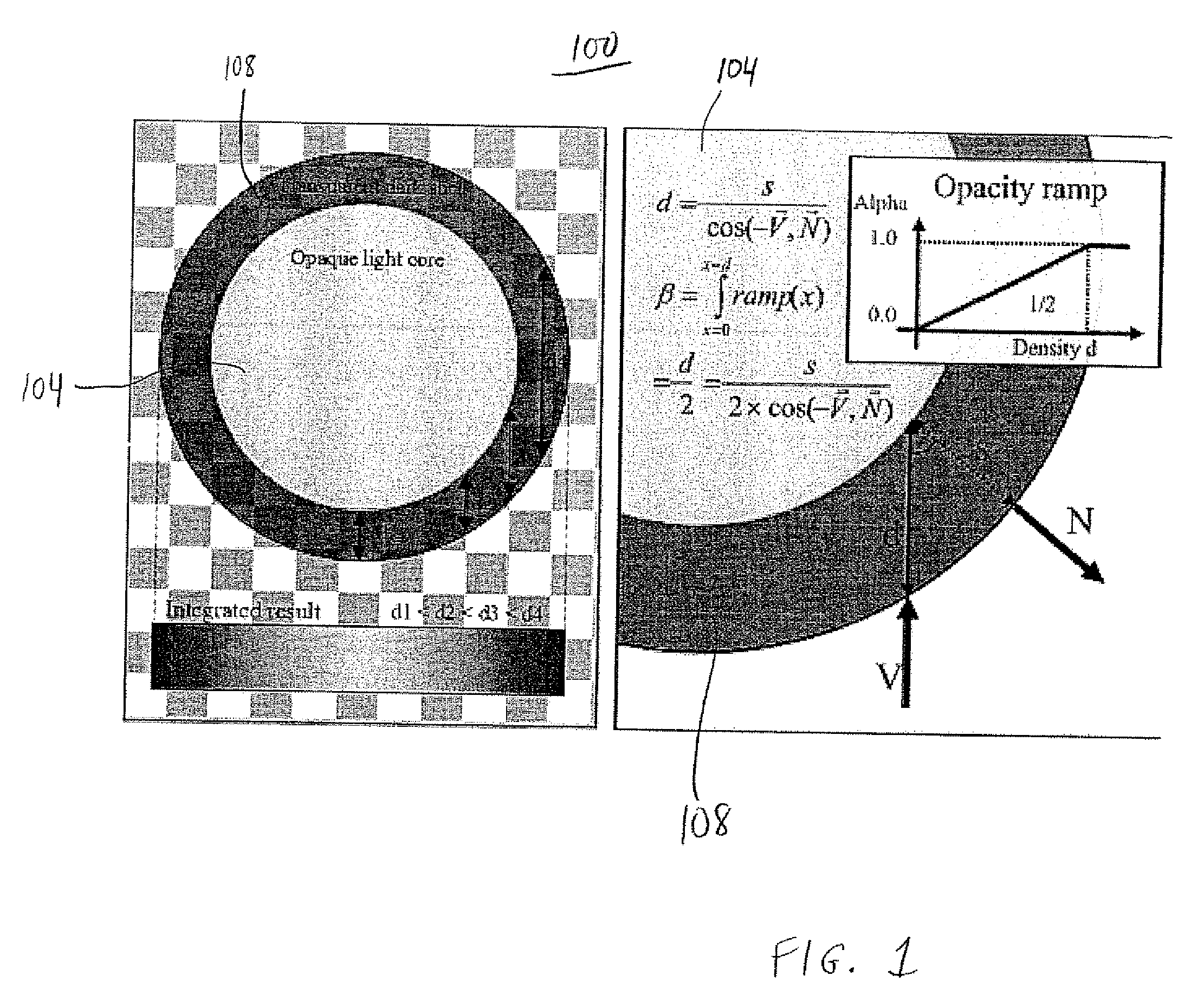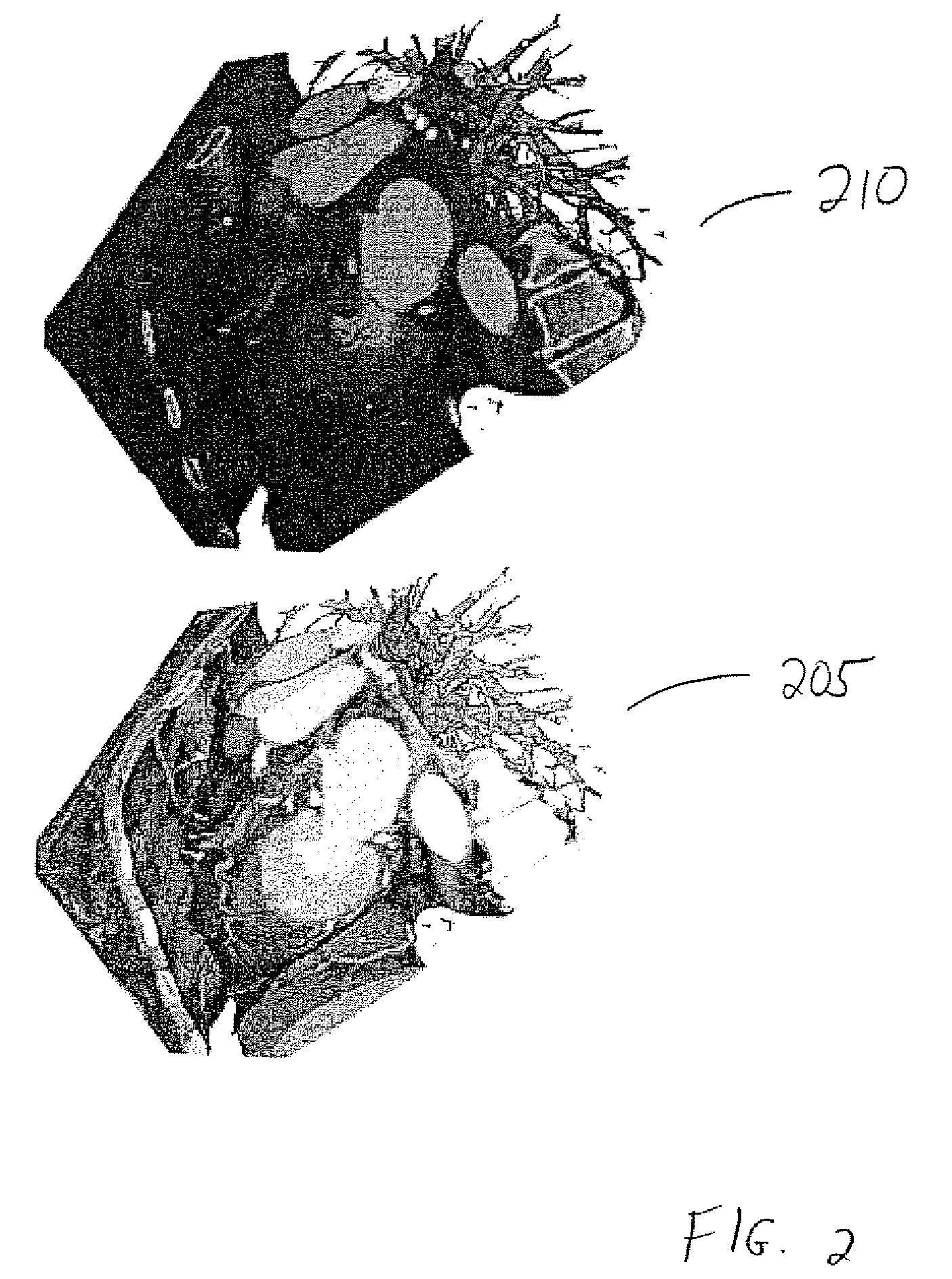Gradient free shading for volume rendering using shadow information
a technology of shadow information and gradient, applied in the field of volume rendering, can solve the problems of fuzzy and/or blurred dvr images, seamless images, and inability to accurately represent the volumetric datas
- Summary
- Abstract
- Description
- Claims
- Application Information
AI Technical Summary
Problems solved by technology
Method used
Image
Examples
Embodiment Construction
[0031] Shadows in images are important visual cues for shape and composition perception. Techniques for computing shadows in volume rendering generally simulate the attenuation of light intensity traveling through a semi-transparent medium. Ray-tracing methods for computing shadows are well-known but are usually slow and unable to perform at interactive frame rates.
[0032] One previous texture-based volume rendering technique featuring shadows was based on a precomputed shadow volume principle. This shadow volume encodes for each voxel the integrated light occlusion from other voxels in regard to the light source. This precomputation is only valid for a static light position and a given object, meaning that the shadow volume has to be regenerated each time the light moves in object-space and transferred to graphics hardware. On the other hand, these techniques are often very fast when a virtual camera (generated by a computer performing these computations to generate the image and s...
PUM
 Login to View More
Login to View More Abstract
Description
Claims
Application Information
 Login to View More
Login to View More - R&D
- Intellectual Property
- Life Sciences
- Materials
- Tech Scout
- Unparalleled Data Quality
- Higher Quality Content
- 60% Fewer Hallucinations
Browse by: Latest US Patents, China's latest patents, Technical Efficacy Thesaurus, Application Domain, Technology Topic, Popular Technical Reports.
© 2025 PatSnap. All rights reserved.Legal|Privacy policy|Modern Slavery Act Transparency Statement|Sitemap|About US| Contact US: help@patsnap.com



